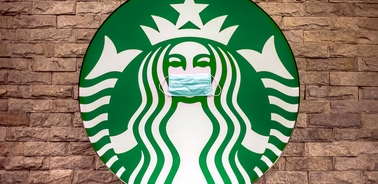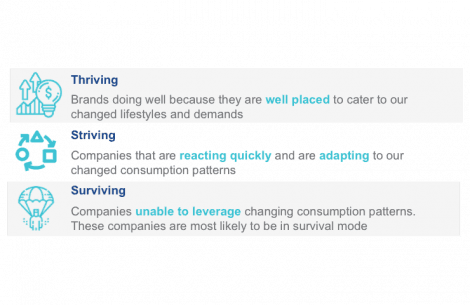- Home
- Our Purpose At Ie University
- Knowledge At Ie University
- Brand Leaders Should Use The Crisis To Create Value That Benefits Society
Brand Leaders Should Use the Crisis to Create Value that Benefits Society

Professor Gabriela Salinas explains how the current global crisis presents a unique opportunity for brands: brands can come out of the pandemic with a valued and fundamental role in society.
By Gabriela Salinas, IE Business School Professor.
When faced with an unforeseen crisis, such as the one we are experiencing with the coronavirus pandemic, brands are often at the frontline of impact, particularly when the crisis entails global market crashes. Analysts at Brand Finance, where I serve as a Global Managing Director, estimate that the brand value at risk for the world’s most valuable brands is around one trillion US dollars. This incredible sum is based on the assessment of the impact of the COVID-19 outbreak on enterprise value, compared to what it was on January 1, 2020.
The risk and impact of any crisis is not uniform across all brands. Its strength is determined, usually, by two factors:
- Sectorial (the type of product or service or category in which the brand operates.)
- Own (a company’s unique culture, appetite for risk, orientation to innovation, and flexibility.)
Sectorial Risk
Categories with high sectorial risk of negative impact from the pandemic include the restaurant industry, leisure, and tourism – all categories in which delayed consumption is simply not possible. International lockdown has had a grave effect on these industries and once restrictions are lifted, consumption will resume but it will not be recovered.
There are some sectors which have managed to experience limited impact from the pandemic. For example, household products, utilities, and telecoms.
Estimated Brand Value at Risk by Sector:
Source: Brand Finance
Own Risk
Every company, and therefore its brand, is a unique ecosystem comprised of various factors such as leadership, culture, values, and product. Thus, crises impact companies in different ways and those companies likewise have varying responses to that impact. Based on this, there are generally three ways brands can be impacted across categories:
- Some companies are now thriving. These brands are well placed within the pandemic to cater to our changed lifestyles, for example Zoom, Vodafone and Amazon. However, how they act now will shape their future trajectory and all of them are facing their own challenges. Zoom is bogged down by privacy issues, Vodafone has been found raising prices in the UK amidst the lockdown, and Amazon is facing trade union problems in the USA, Spain, and Italy. These reputational issues must be tackled in order for any of these companies to emerge out of the crisis with strong brands and the ability to optimize long term profitability. They are thriving now, but surge will not last forever, and in order to manage brand reputation through such scrutiny (and maximize long-term profitability), these companies.
- A second group of companies are striving, by rapidly adapting business plans, products, and services to stay current and respond to urgent consumer needs. For example, during the lockdown, the ridesharing company Cabify launched a courier service on top of its traditional people transportation services. Similarly, LVMH decided mid-March, to dedicate three of the company’s perfume manufacturing premises to the production of hand sanitizer.
- Lastly, there are the companies that are merely surviving. These are the brands that have been unable to transition to online or have come to a standstill, for example, apparel and airline could potentially lose 20% of their brand value because of the crisis.
Own risk: There are 3 ways brands across categories have been impacted
Source: Brand Finance
The question every smart business leader and brand manager is now asking herself is: where do we want to be in 2021? To lead a brand through a crisis such as the one we are facing today – and to do so in order to not only survive but to come out the other side a stronger, more relevant brand from consumers – takes clear vision of what the brand is now and what it could possibly become. There are no universal recipes, but some ingredients must be present in order to mitigate the effects of the pandemic on a brand and leverage long-term profitability. To manage the aforementioned risks, metrics linked to the creation of brand value must be measured and monitored. But measuring requires a clear vision.
How brands can communicate during the crisis in order to protect – or increase – brand value:
- Keep investing in communications but avoid meaningless messages: Find the right content and tone. It's not about how much you invest, but how you invest.
- Consider how your brand actions will improve the lives of stakeholders: Build genuine reputation, not campaigns.
- Adjust all elements of your “marketing mix,” not just your promotion: Ask yourself what can be done to actively improve the lives of customers.
- Consider whether short-term losses could generate long-term profitability: In particular, when it comes to protecting employees.
- Look for ways to collaborate with stakeholders and other companies to share resources and alleviate the impact of the pandemic in the community: Today, brands have the opportunity, and are expected to provide their customer with collaboration, protection, and security. Trusted brands put the collective interest ahead of short-term gains.
Crises create uncertaintly, which can threaten the strategic goals. But with crisis also comes opportunity. In fact, the pandemic, in which we now find ourselves, as individuals and as a global community, is a crisis that presents a unique opportunity for brands – if leaders choose to answer the call to look closely at their brand and improve their relevancy to consumers and to society. This is the key to increasing brand value. How this call is answered will determine whether a brand comes out of the pandemic with a valued and fundamental role in society – and yes, therefor profitable.

